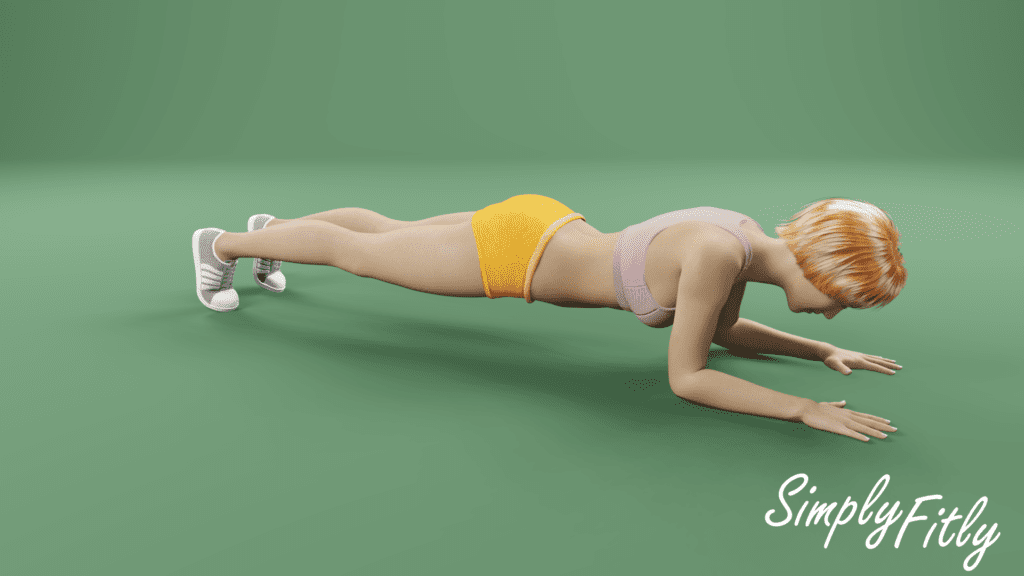
Muscle group: upper body (chest, shoulders), core, lower body (lower back, hips).
Intensity: moderate.
Directions
- Begin on all fours, with your forearms on the ground and elbows directly under your shoulders.
- Extend your legs behind you, keeping your feet hip-width apart and toes curled under.
- Engage your core muscles and keep your back straight.
- Hold the position for as long as you can, without allowing your hips to sag or your back to arch.
- Release the pose by gently lowering your knees to the ground.
Modifications: for beginners it is recommended creating a triangle base rather than keeping forearms parallel. It makes a strong foundation for the exercise and minimizes the risk of wrist or shoulder discomfort.
Creating a triangle base means positioning the forearms so that they form an equilateral triangle with the hands. The elbows are slightly wider apart than shoulder-width, and the hands are placed flat on the ground, forming the other two corners of the triangle.
Mistakes
- Sagging Hips: Allowing your hips to drop towards the floor creates an arch in your lower back, compromising core engagement.
- Rounded Back: Conversely, letting your upper back round and shoulders hunch can decrease the effectiveness of the exercise and strain your neck.
- Lifting Hips Too High: Pushing your hips too far up can cause your back to arch and disengage the core muscles.
- Incorrect Head Alignment: Allowing your head to hang down or jutting it forward can strain your neck and affect your overall posture.
- Improper Elbow Placement: Placing your elbows too far forward or backward can affect stability and strain joints.
- Elbows Too Wide: Elbows that are positioned too wide can make it harder to engage the core and maintain stability.
Conclusion
Forearm plank is a fundamental bodyweight exercise that targets the core muscles, shoulders, and back. By engaging multiple muscle groups simultaneously, it promotes core strength, stability, and endurance. This exercise helps improve posture, balance, and overall functional fitness.
Forearm plank offers a versatile option suitable for various fitness levels. It can be performed anywhere without the need for equipment. Regular inclusion of forearm plank in your routine enhances core strength and supports proper spinal alignment. Additionally, it contributes to better body awareness and coordination.
Forearm plank is an excellent addition to circuit training. As an isometric exercise, it challenges the muscles without the need for repetitive movements. In a circuit, forearm plank provides a period of active recovery for other muscle groups while maintaining cardiovascular engagement. Its versatility allows it to complement strength-focused exercises, contributing to a comprehensive and efficient workout.
Whether for overall core strength or as part of a dynamic circuit, Forearm plank delivers a solid foundation for improving strength, stability, and overall fitness.